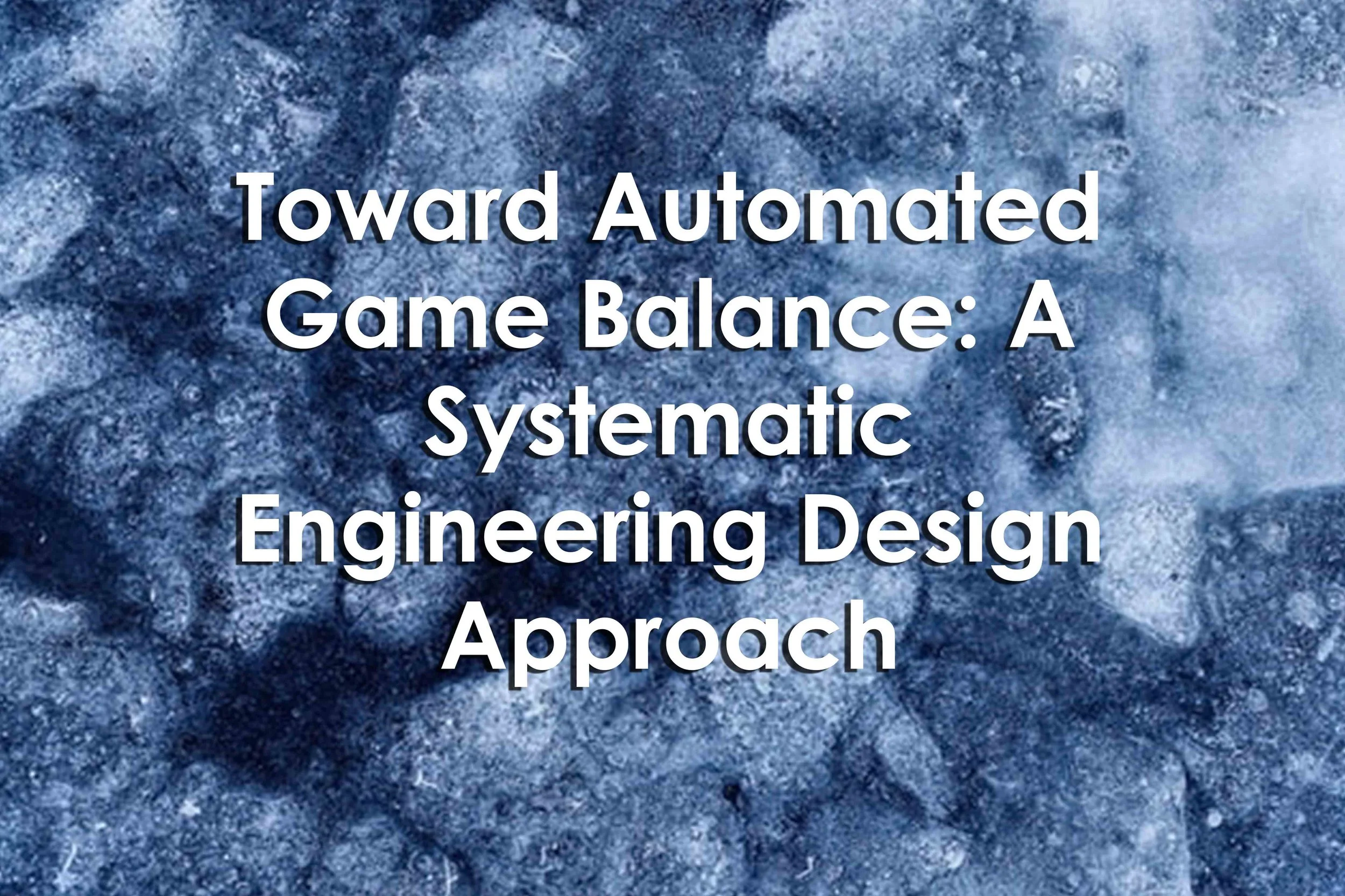Toward Automated Game Balance: A Systematic Engineering Design Approach
Toward Automated Game Balance: A Systematic Engineering Design Approach
Toward Automated Game Balance: A Systematic Engineering Design Approach
By Daniel A. DeLaurentis, Jitesh H. Panchal, Ali K. Raz, Prajwal Balasubramani, Apoorv Maheshwari, Adam Dachowicz, and Kshitij Mall
Abstract
“This study proposes a framework to automatically assess and bring balance in real-time strategy (RTS) games. A three-layered framework comprising intelligent bots, deep machine learning, explainable artificial intelligence (XAI), uncertainty quantification (UQ), and optimal learning is presented. For preliminary analysis, we conducted a study using the micro RTS game built specifically for advancing AI research. Data is generated through self play games between the intelligent bots, and game balance is measured through the predicted probability of each player winning a game. To demonstrate game re-balancing using this approach, a sample unbalanced game is shown along with proposed perturbations on important features identified using a popular XAI technique called SHapley Additive exPlanations (SHAP). Results indicate this framework enables efficient identification of game parameters causing imbalance and iterates over game parameters to restore balance. The three-layered framework is designed to be generic and applicable to more complicated RTS games, such as StarCraft II.”
Reference
DeLaurentis, D. A., Panchal, J. H., Raz, A. K., Balasubramani, P., Maheshwari, A., Dachowicz, A., & Mall, K. (2021). Toward automated game balance: A systematic engineering design approach. 2021 IEEE Conference on Games (CoG). doi:10.1109/cog52621.2021.9619032 https://ieeexplore.ieee.org/abstract/document/9619032/authors
Keyword
Game balance, game breaking, microRTS, convolutional neural networks, SHAP, explainable artificial intelligence, real-time strategy games, research

